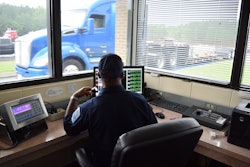The dynamic evolution of the transportation landscape necessitates forward-looking regulatory adaptations that seem very doable in today’s climate of economics.
The ongoing debate surrounding the augmentation of Gross Vehicle Weight (GVW) from 80,000 pounds to 96,000 pounds through incorporating a third axle is a crucial issue at the crossroads of technology, sustainability and safety.
Adapting to the future
In transportation, it is evident that the future will diverge significantly from the past, primarily due to revolutionary changes in propulsion systems. Innovations like long-life batteries, fuel cells and hydrogen systems are on the cusp of revolutionizing vehicular movement.
Consequently, regulations concerning vehicle specifications must be agile enough to accommodate these changes, enabling engineers, creators and innovators to explore novel avenues.
Environmental goals and technological freedom
One pivotal rationale behind advocating for a GVW increase lies in its potential to advance emissions targets. Elevating weight capacity enables engineers to design more efficient and ecologically sustainable systems. The transportation sector's carbon footprint can be effectively reduced by accommodating larger battery packs and cutting-edge technologies, necessitating additional weight and space.
The tri-axle (also known as a tridem) solution
Incorporating a third axle to augment GVW represents a resolution to bolster capacity while maintaining safety.
Traditional tandem axle configurations have an 80,000-pound GVW limit. However, introducing a third axle at the rear of the trailer to create a tri-axle setup could elevate GVW to 96,000 pounds. The feasibility and safety implications of this shift have spurred considerable debate.
It is my proposal that we, as an industry, seriously debate this issue once and for all in Cleveland, Ohio, Sept 11-15 at the EnergyandMobility.org Conference and Expo. All the powers that be will or could be there to decide. If yes, it's off to Congress and the president we go.
I asked several of my trusted associates what position they would take (pro or con), during the debate. Here’s from Daniel Kinsman a heavy haul truck driver and, in my opinion, so much more:
“Overall, it is a great step, I would add in the rear most axle is an equally rated steer axle, so if the forward tandems are 40k rated, the steer would be 20k. Reasoning is that I have seen a.5 mpg improvement pulling this kingpin steered trailer versus a non-steer tri-axle. All three don't need to be steered, but the last one should be."
And from Sweden, an engineer I worked with years ago introducing Counteract Balancing Beads to his homeland. Johan Granlund, M.Sc. in civil engineering, an expert on vehicle/road interaction from Gagnef, Dalarna County, Sweden, has this to say in a debate:
“Your solutions are correct. But are the readers aware of the problems that need these solutions? You may benefit from showing some examples of how key figures for CO2, crash figures, road wear and transport costs per ton cargo are improved by increasing HGV capacity with another axle.”
My response, “Man, I can’t do everything by myself at the same time!”
One thing that was missing from the early debates and studies was input from a world famous columnist (in the trucking industry) such as Bob Rutherford who was against “just changing” the vehicle GVW until he started studying energy and mobility issues as research for his columns.
We must have the following technology operating on those vehicles, and one of the three axles must be placed at the very end of the trailer.
Let’s, for ease of communications, call these the Rutherford Protocols.
End placement of third axle
Placing the third axle at the rear strengthens the ICC bumper, mitigating the risk of underride accidents. As you may have expected, I have written about these systems before.
Autonomous tire pressure management
Autonomous tire pressure management optimizes load and inflation PSI, enhancing vehicle stability and control.
Predictive shock absorber maintenance
Predictive maintenance sensors integrated with AI software forecast potential shock absorber failures, curbing axle hop and bolstering road safety.
Zero out-of-balance wheel ends
Self-adjusting internal balancing beads minimize vibrations, promoting smoother and safer rides.
Safety, responsibility and progress
The GVW debate is not merely about accommodating larger loads. It encompasses responsible progress. Ensuring safety remains uncompromised and is paramount, making it essential for regulatory adjustments to address potential risks rigorously.
By adopting the Rutherford Protocols, regulatory bodies demonstrate their commitment to marrying innovation with safety, paving the way for responsible advancements within the transportation sector.
Legislative efforts are also in play, like the “Safe, Flexible, and Efficient Trucking Act of 2015”, which explores modernizing vehicle weight limitations, reflecting the urgency to adapt regulations to evolving technological paradigms. Regulations try to keep up but 2015 was eight years ago.
In a world characterized by rapid technological strides, regulatory frameworks must evolve to accommodate progress while upholding safety standards. The discourse surrounding the augmentation of GVW from 80,000 to 96,000 pounds via a third axle addition epitomizes a pivotal juncture on this trajectory.
By conscientiously integrating the Rutherford Protocols and prioritizing safety, regulatory authorities can lay the foundation for a future where vehicles are more efficient and environmentally friendly. The amalgamation of emerging technologies and safety-first approaches will define tomorrow's transportation landscape.












